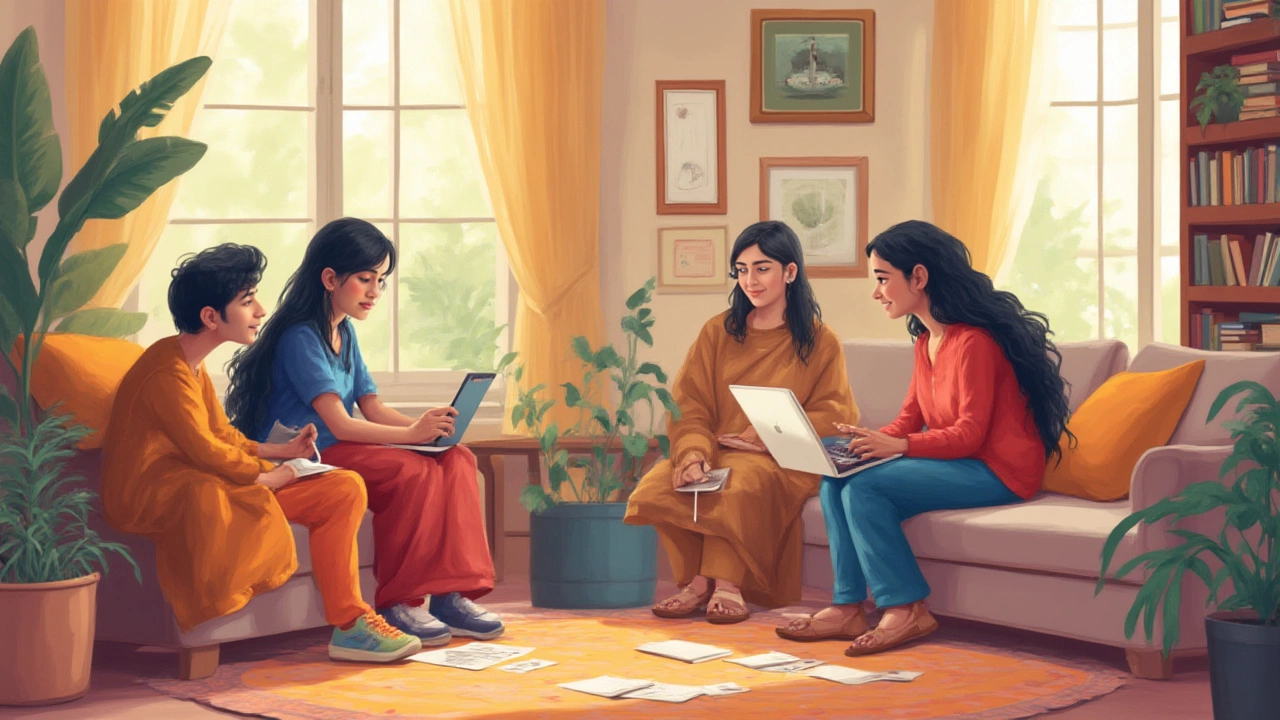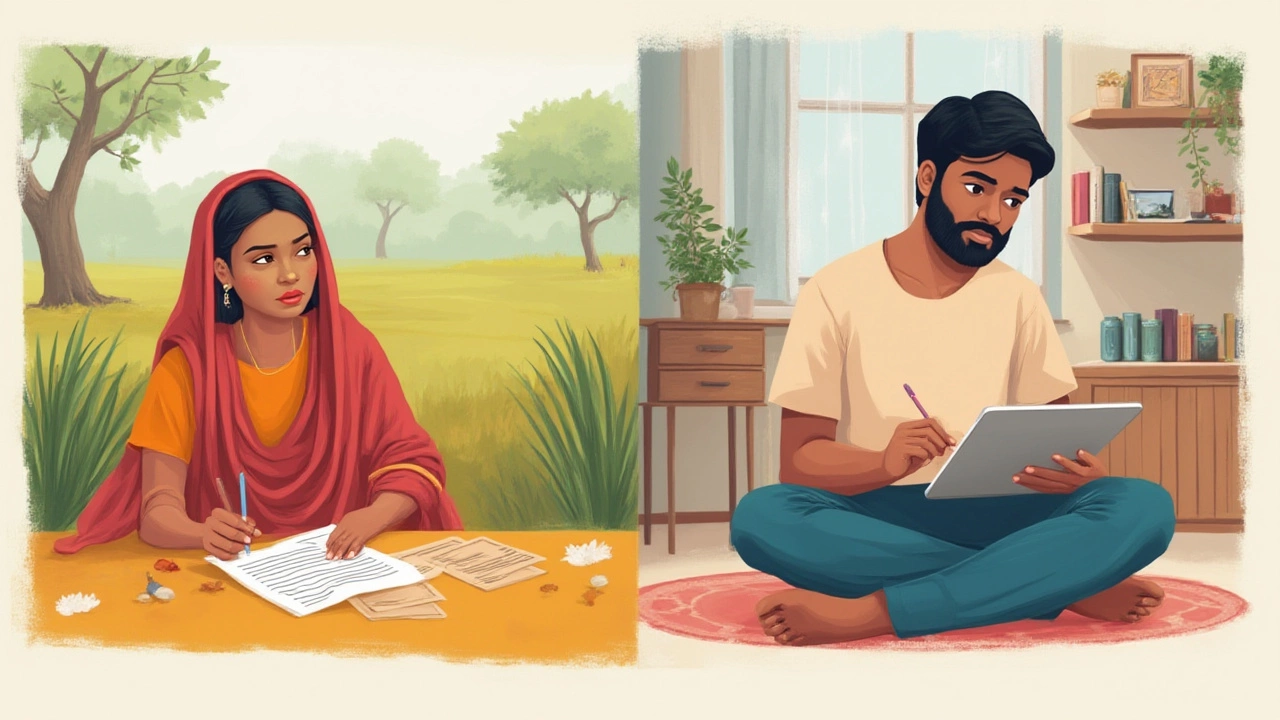
If you’ve scrolled through university websites lately, you might’ve seen ‘distance learning’ and ‘online learning’ tossed around like they’re twins. But lumping them together is like calling a bicycle and a motorbike the same—sure, they both get you places without walking, but the ride and the rules are different. Today, the lines are blurrier than ever, and the old definitions don’t fit as neatly as they used to. Let’s break down what really sets these two apart, so you can pick what suits your plans and lifestyle.
Understanding Distance Learning: The Roots and How It Works
Distance learning isn’t actually new. Back in the day, it looked like a pile of workbooks, assignments posted (yes, snail-mailed) to your tutor, and maybe a VHS tape or two if you were lucky. It’s been around since the 19th century—think Isaac Pitman’s shorthand courses sent by post in England. The point? You could earn your credentials without ever setting foot on a campus.
Fast forward to 2025, and distance learning has gotten a massive digital upgrade, especially in countries like Australia, the US, and India. But the core remains: you’re not physically present for the lectures, lab works, or tutorials. In most distance learning programs, study materials are sent in bulk at the start of term or available to download in one go. You learn at your pace, with a strong do-it-yourself flavor. One fun fact: Open Universities Australia, one of the biggest players in my own backyard, still runs a handful of courses almost completely by correspondence—they’ll ship you physical textbooks, even now.
Interaction in distance learning is low-key. Communication with tutors or fellow students happens through email, discussion boards, or sometimes even over the phone. Live classes or webinars aren’t a built-in feature, though some schools are starting to throw them in as bonus sessions. You’ll rarely find group projects. Assessments can be mailed in or uploaded to a portal, and exams are sometimes conducted at local centers or monitored remotely.
Distance learning fits well for folks with unpredictable schedules, people who live out in the sticks (rural students make up a big chunk of enrollments in Australia), or anyone juggling full-time work and family. Independence is key—there’s no teacher waiting for you to show up at 9am. But it’s not for everyone. If you need motivation from classmates and regular check-ins, this style can feel a bit… lonely.
What Makes Online Learning Different?
So, how does online learning step into the scene? Put simply, it’s learning delivered through the internet, using digital tools designed for engagement. The connection isn’t just about the lack of a physical campus; it’s how you interact with content and people. Modern online learning is packed with live webinars, instant forums, video explainer series, and collaborative Google Docs—even full-on virtual labs. And yes, you’ll find more dog memes dropped by your classmates than in any snail-mail study group.
Not every online course is live-streamed. There’s a mix—some instructors teach live classes (synchronous), others record modules you can watch anytime (asynchronous), and some blend both, meaning you must attend some live sessions but can also catch up with recordings. Schools like Deakin University here in Melbourne lead the pack, making use of chat tools, quizzes, scheduling apps, and even AI tutors that nudge you when you’re falling behind.
But the big change is community. Online learning expects you to interact. Forums, video calls, breakout sessions, polls, and group projects are standard. Exams? Often open-book, timed, and monitored through webcam invigilation. Your presence—questions in class, responses on forums—counts toward your grades in many programs. Compare that to distance learning, where sometimes you could finish a whole semester and barely exchange a word with anyone else.
Flexibility is still front and center, but online learning tends toward structure—schedules, timelines, and due dates are clearer and enforced more actively than in old-school distance setups. That keeps many people honest. Still, if you travel a lot or have unpredictable internet, the need to be ‘online’ at certain times can be tricky. A survey by the World Economic Forum last year pinned online learning satisfaction rates at 72%, up from 60% just five years ago, thanks to better tech and stronger student support.

Decoding the Overlap: Where Do Distance and Online Learning Meet?
Here’s where things can get squishy. Most distance learning today does use the internet—email, PDF downloads, digital textbooks. Meanwhile, modern online courses borrow from distance learning’s self-guided feel. The terms are used differently depending on the country or university, which adds to the mix-up. Some Aussie unis, for example, label any off-campus course as ‘distance,’ even if the whole thing is Zoom-powered and more interactive than a Netflix watch party.
Let’s fix this with a comparison:
- Distance learning usually focuses on materials you engage with solo, on your own timeline, with minimal real-time interaction.
- Online learning is about digital engagement—think live or recorded classes, group work, active student communities, and often a set schedule.
- Distance learning can be low-tech (printed packs, DVDs), while online learning is always internet-driven.
- Assessment in distance learning may include mailed essays or at-home exams, compared to instant digital submissions in online courses.
- Support in online learning is often on-demand (live chat, instant help), while in distance setups, replies can take days.
Universities blur the lines on their websites, often combining ‘distance and online’ under one umbrella. If you’re applying, ask for a sample lesson or a breakdown of typical class formats—it makes a world of difference.
Choosing What Fits: Tips for Picking the Right Option
So, which one do you pick? It’s not about which is best—it’s about what clicks with your life right now. First, ask yourself if you have regular internet access and how much you rely on routine. If you’re disciplined and love setting your own pace, distance learning lets you work at your rhythm, perfect for shift workers, regional Aussies, or anyone whose days aren’t 9-to-5. Need more structure and accountability? Online learning’s timetables and lively group chats mean you’re rarely left solo, making it great if you thrive on interaction.
Here are a few other checks before you commit:
- Check assessment style: Do you love essays or prefer live presentations? Pick what matches your strength.
- Ask about tech requirements: Online learning might need a fast laptop, webcam, and stable connection. Distance-only setups can sometimes run on basics.
- Look at time zones: For international students, live sessions can mean midnight alarms—factor that in.
- Probe about student support: Online learners often get 24/7 chats or instant help. In distance-only programs, don’t expect real-time responses.
- Compare course content: Some subjects—think programming, business, psychology—sync perfectly with online interactivity. Others, like basic humanities, are just as strong in a DIY distance format.
Here’s a tip from academic advisors: Do a tiny self-test online, like the ‘How do I learn best?’ quiz (look for ones by universities, not just commercial test sites). Your results will show if you’re more of a lone-wolf or a community learner. And don’t be shy about calling course coordinators—most are happy to guide you, especially if you mention you’re deciding between ‘distance’ and ‘online’ formats.

Looking Ahead: How Distance and Online Learning Are Evolving
This space isn’t standing still. Tech is moving so fast, yesterday’s distance course is today’s fully interactive online experience. Here in Australia, universities report that two out of every three students now take at least one online subject. AI tutors, immersive simulations, and instant feedback loops are quickly replacing passive PDFs and mailed test sheets. Even distance learning programs at places like IGNOU in India are adding WhatsApp groups, livestream Q&As, and multimedia content. The gap? It’s closing.
Will distance and online learning totally merge? Some say yes, but there will always be demand for plain, self-paced materials—especially for adult learners who just want credentials with no group work or mandatory chats. Others crave a virtual community to keep them going. Trends show that hybrid models—think self-study spiced up with live online workshops—are growing fast. And with education going global, time zone hopping and 24/7 access matter more than ever.
The jargon can be messy, but here’s the short version: if you want structure and connections, pick true online learning. If you need maximum flexibility and prefer solo study, classic distance learning is your friend. Either way, digital delivery is now part of the education toolkit, and there’s never been a better time to try both.
